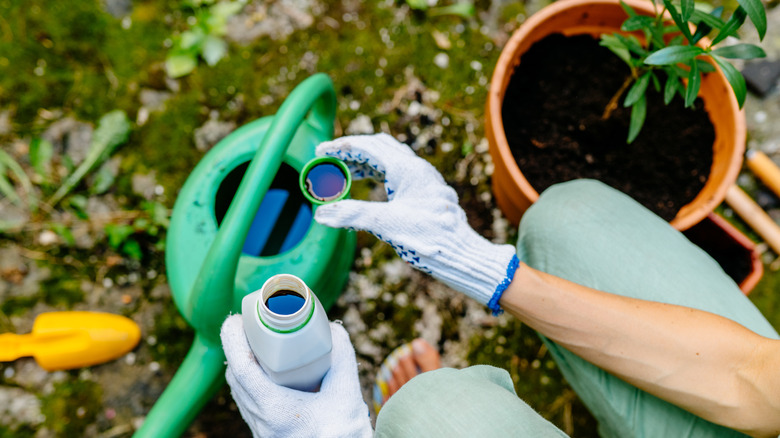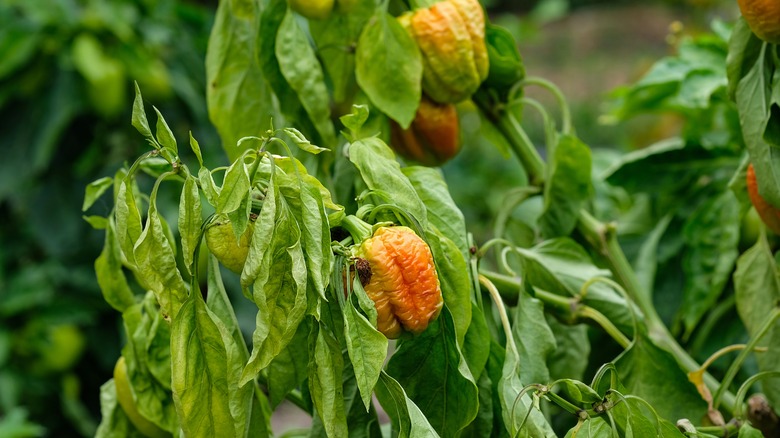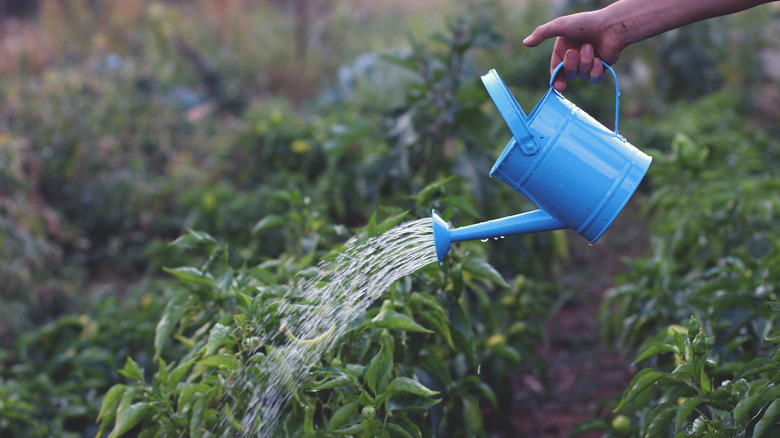Hydrogen Peroxide Is The Trick To Minimizing Drought Stress In Plants
Hydrogen peroxide has already earned its place in the garden shed. Many gardeners use it on their treasured plants to protect them from sun damage, prevent pests, and treat fungal infections. Some even use hydrogen peroxide as a last resort to combat root rot. But during the summer heat, there's another impactful advantage to using hydrogen peroxide in the garden: it helps support plants in times of drought. In fact, not only does hydrogen peroxide help your plants survive during short-term drought, but it can even help them tolerate continuous drought stress.
To use this easy hydrogen peroxide hack, simply mix 1 tablespoon of three percent hydrogen peroxide with 1 gallon of water. The next time you go to water your plants, water with this diluted solution. Some studies also suggest promising drought tolerance results for seedlings treated with hydrogen peroxide. Since hydrogen peroxide offers plenty of other benefits for your plants, why not give this gardening hack a try?
What is drought stress?
Drought stress happens when a plant receives less water than it needs. In a home garden, this can happen for a wide variety of reasons. Sometimes, the highest-need plants slip through the cracks due to a watering schedule created with more drought-tolerant species in mind. Every plant variety has different water needs, and needs vary based on soil type and sun exposure as well. Some gardeners work hard to conserve water in order to protect the environment and keep their bills low. Sometimes drought stress simply happens because the plant parents need a vacation.
If you suspect that your plants are suffering from drought stress, there are a few key symptoms to look out for. First, if your plants are growing very slowly or looking dull, consider drought stress as a possibility. At more advanced stages, drought stress can cause wilting and discoloration, like green leaves turning yellow. Since every type of plant reacts differently, dig into common signs specific to your plants if you notice something is off –- the last thing you want to do is treat for drought stress when the real problem is overwatering or a soil imbalance!
How hydrogen peroxide can help
Hydrogen peroxide works on a cellular level to minimize the harmful effects of water shortages for plants. By sending signals throughout the plant's cells from the roots, hydrogen peroxide encourages a regulated response and defense mechanism from the plant, making it less likely that the plant will suffer long-term damage. This amazing ability, paired with the other benefits of using hydrogen peroxide in the garden, makes it a versatile solution for all types of gardeners.
In addition to watering with the hydrogen peroxide formula, gardeners can also take extra precautions to prevent damage from drought stress. The most obvious strategy is to regulate your watering schedule, especially for plants with high water needs. A DIY raised bed watering system will keep your plants watered and safe from drought stress, for example. You can also add mulch to lock in moisture. If you're still planning out your garden, prioritize drought-resistant plants if you live in a dry area, and water when necessary while they establish strong root systems.


